——–By Heritage Architect Sanaeya Vandrewala
After attaining certain stability in Sanjan, the Parsis started settling in other towns along the coast of Gujarat. They settled in Navsari, Surat, Khambhat, Bharuch, Ankleshwar, and Tarapore while maintaining trade contacts with Iran. Records show that from 900 AD onwards the Parsis had settled comfortably in these towns and had become quite prosperous. Several years of peace, which had helped the Parsis survive and prosper economically and culturally were followed by 200 years of continuous disturbances. Despite these unfavorable conditions, the Parsis managed to keep their distinctive nature intact.
The most distinctive period for the Parsis during this time was the part played by Dastur Meherjirana in Emperor Akbar’s court of religious conferences (1570-1578 AD). During this period Navsari developed as one of the important centers for Parsi learning and culture. This was followed by the prosperous growth of other places as well. Surat was now being called as the City of Gold. Bharuch had become a well-known town, whereas Bilimora had transformed from a village into a thriving town.

In the 17th century, European traders started coming to western India. The port of Surat gained importance and the Parsis began to gain important positions in the East India Company. In 1661, as Bombay became a British possession, Parsis in due course became the mercantile elite of India. The success of the Parsi community was mainly dependent on its adaptable nature, lack of social religious taboos and command over the English language. The influence of Parsis on the Indian life was not prominent until the 18th century. By the end of the 18th century, a large population of Parsis had migrated towards Bombay. Parsis had merged with the Indian life and were doing well in various trades and businesses. By 19th century Parsis had become the foremost figures in Bombay establishing the first business houses in the country, they emerged at the local, district and regional level with social and economic gains that were elite based. Thus by the 20th Century Parsis along with other communities they played a major role in making Bombay the richest and the most important industrial and commercial center of India. Parsis also played an important role in the Indian freedom movement. Dadabhai Naoroji who belonged to the Parsi Zoroastrian faith was the first to represent India in the British parliament in 1892. Many other Parsis held important political positions even after independence.

The Zoroastrian refugees have come a long way. Their glorious years in Iran were followed by times of persecution, suffering, and turmoil. Their miraculous landing in India and absorbing a foreign culture, while maintaining their own identity as Parsi Zoroastrians, make it a true world culture today.
Parsi Zoroastrians have contributed in a large way towards the growth of the nation. Often starting from humble beginnings, they lived in great style but returned their wealth many-fold to the country. From shipbuilders to freedom struggle, from charitable institutions to business and enterprise; Parsis have helped not only theirs but other communities as well. They have contributed towards hospitals, schools, fire temples, trusts to promote education and fine arts extending their philanthropy to one and all. Parsis have been pioneers in industry hospitality and education. Among the earliest is the Wadia family for shipbuilding, Petit business house for laying foundation for the textile industry, Godrej business house for manufacture of household products, business house of Tata’s for industrial foundation, Dr Homi Bhabha for being the prime architect of India’s nuclear and space program, three baronets Sir , Sir Dinshaw Petit, Sir Cowasjee Jehangir and many others.
The story of the Parsi community is a story of victory of man’s undying spirit. The position and status achieved by the Parsi community have brought a strong sense of fulfillment in its members. Even though minuscule in number the community is a respected minority, advancing and achieving by merit and talent.
Mahatma Gandhi while once addressing a crowd in England in the 1940’s stated,
“I am proud of my country, India, for having produced the splendid Zoroastrian stock, in numbers beneath contempt, but in charity and philanthropy perhaps unequaled and certainly unsurpassed”. Even though dwindling in numbers, in this 21st century brings one hope for a revival of the community, which will help the Parsis rise back to a national as well as an international scene.
Bibliography:
- Dadachandji F (1995) Speeches and writings on Zoroastrian Religion, Culture, and Civilization. Karachi:Ehtesham process.
- Dhanjisa, S and Kamerkar, M (2002) From the Iranian plateau to the shores of Gujarat: The story of Parsi settlement and absorption in India. Mumbai: Allied Publishers/K. R. Cama Oriental Institute
- Khan, R (nd) Insights into the Zarathustrian religion. Mumbai: Zarathushtri Trust
- Rivetna, R (Ed) (2002) The legacy of Zarathushtra:An introduction to religion, history, and culture of the Zoroastrians. Illinois: Federation of Zoroastrian Association of North America
]]>
1. O the Ameshaspends! We bring you to mind through the prayer of praise of the Seven (Haptangini).
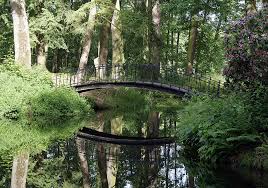 We praise the reflections in the water; we praise the bridges over the waters;
We praise the reflections in the water; we praise the bridges over the waters;
We praise the various roads that travel in different directions,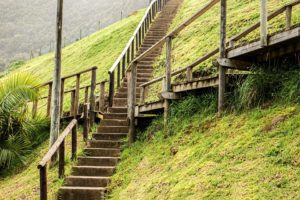
and we praise the meeting of the roads.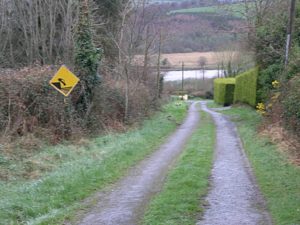
2. We praise the mountain that is the friend of the waters; we praise the lakes abundantly filled with water; we praise the sheaves of grain; we praise the 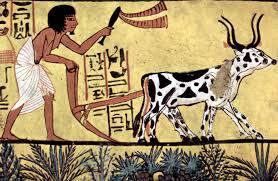 domesticator of animals. We remember Hormazd and Zoroaster.
domesticator of animals. We remember Hormazd and Zoroaster.
3. We praise the Earth and the Sky; we praise the strong winds created by Hormazd; we praise mount Albruz; we Praise the world and all its natural phenomena.
4. We remember the good mind and the souls of the Pious. We praise the site of the 5 doors (Avesta: Vasim cha Yaam Panchasdvaram); we Praise the holy salt (khar) that stands in the middle of the waters of the *Vouru-kash sea; we Praise the sea of Vouru-kash (name of sea).
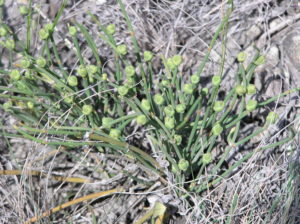
5. We praise the green and strong Ephideris Vulgaris (Haoma plant); we praise Ephidera Vulgaris L. which brings progress and furthers this world: we praise Ephidera Vulgaris L which troubles over pains (cures our ills by troubling our pain away).
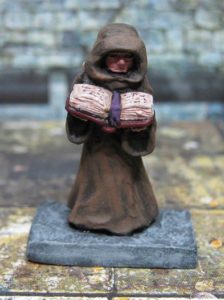 6. We praise the flow of the waters; we praise the flight of the birds; we praise the return of the Aathornan who travel far, to preserve the holiness of the nation. We remember all the Ameshaspends.
6. We praise the flow of the waters; we praise the flight of the birds; we praise the return of the Aathornan who travel far, to preserve the holiness of the nation. We remember all the Ameshaspends.
(The rest of the prayer, Haptan Yasht is same as the beginning of the Yasht)
* VOURU-KASH: Dictionary meaning:
‘Vouru’ means ‘full of’ or ‘many’. Kash is a ‘border ‘or ‘shore’ or ‘enclosing line’.
Avesta also uses another word for the word ‘Kash’, the other word is ‘Karsh’ for which the Persian synonym is ‘Keshvar’ meaning ‘country’. In Persian and in Pehelvi, like in Avesta, the word means a place with a vast border or a sea with many shores; The Persian word being ‘Farakh-kard’ and the Pehelvi word being, ‘Farakh-o-kart’.
The word Keshvar stems from the Persian word for a ‘line made on a field by a plough’ not a mere furrow but a line defining the extent of ownership of land. If Kash also means ‘land’ then, Vouru-kash could well mean a vast land or a land with many borders.
In the Avesta:
Vouru-kash is the name given to the (mythical?) place from which the river Ardvisur flows, the sea into which it flows and the river itself—all three go by the same name amongst other aliases.
In Zoroastrian Myth there is the two original trees, the first trees created by Ahura Mazda— 1) the Tree of Immortality also known as the Tree of Life and 2) the Tree of all Seeds. Both grew together in the first waters created by Ahura Mazda, in the deepest part of that ocean called therein, the Sea of Vouru-kash.
Tir Yasht, Kardo 5: places the Vouru-kash (Farah Kart Sea) somewhere in the space between the sky and the earth. If something is thrown ‘like a comet’ it will arrive at the Farah Kart Sea.
Avan Yasht verse 4: describes it has having ‘a thousand lakes and thousand rivers’ each body of water is spoken of as huge (a swift rider would take forty days to go down its length).
Avan Yasht verse 5: speaks of the waters of the Vouru-kash inundating the entire known world, in all seasons, at all times.
According to the Boon-Da-Ishn, the Farah Kart Sea covers one-third of the earth’s surface and is the size of a thousand seas.
Physical location: If one believed that Vouru-kash was a physical body of water on Earth, scholars are of the opinion that there is no place in Iran which

has a name even remotely close to the name, ‘Vouru-kash’. However, there is a theory among scholars that the Sanskrit word ‘Varukaksha’, the old name for the town of Bharuch in Gujarat, India and the river Narmada which flows through this town are perhaps, Vourukaksha.
Theories also claim Vouru-kash to be the Caspian Sea (Mazandaran Sea), Sea of China, Gulf of Persia, the Indian Ocean, the Puyitic Sea, the Marangan Sea (Korea), and many others sea.
Scholars are still in the process of examining this claim.
The Shahnama places the Vouru-kash as the Sea of China.
The Shahnama also places: the Vouru-kash as an Indian Sea whence rose the Satvis (Pehelvi for the Indian Ocean as it was then known) of the ‘one hundred quarters and one hundred abodes (Sata-Vaesa, of the Avesta named after the star recognized today as Canopus). In pre-Islamic tradition, the rain and the irrigation of all lands on the face of the Earth, as well as the cleansing of water of dirt and filth, was one of the functions of the Satvis Sea and the cleansed water flowed into Farah Kart Zereh.
]]>